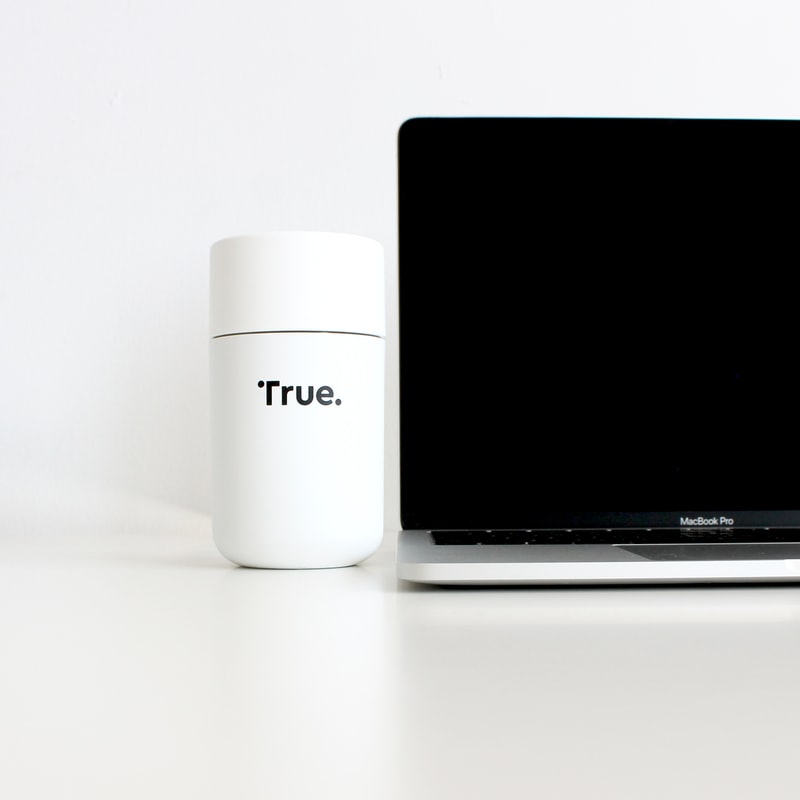What’s the right competitive marketing strategy for 2021?

“What’s the right competitive marketing strategy for 2021? The entrepreneur asked.
Please. Don’t do “competitive marketing”. I responded.
“Huh?” she responded.
Please. Do not. Compete. I begged. You see……
Legends don’t want to fight over old things. They want to create new things.
Legends like Kara Goldin, founder/CEO of Hint Water do not compete in existing market categories. They design their own. She’s carved out such a powerful niche for Hint, that Kara routinely kicks Coke’s ass.
The days of traditional “competitive marketing” are over. Having a winning company isn’t about beating rivals in an old game anymore. It’s not about competing. Or comparing. It’s not about fighting for existing demand. Or playing the “we’re better/faster/cheaper/ than them” game.
Instead, today’s most legendary entrepreneurs, CEOs, leaders, and marketers are category designers.
They are radically different.
They design their own game by establishing entirely new market categories, developing them, and executing to position themselves as the leader. And, based on our primary research, category queens/kings earn 76% of the total value created in their market.
In the past year, the legends of this craft have been able to show the world why their breakthrough innovations matter. They have strategically grown their markets by educating customers to abandon old ideas and products and embrace a new way of doing things.
And category queens reap exponential rewards. We’re about to release some more primary research that shows for every $1.00 of revenue growth earned by a category designer they earn $4.82 of market cap growth. That’s nearly 3x higher, than other high growth firms who are doing “competitive marketing”.
So please.
In 2021.
Don’t compete in an existing category.
Design your own.
++++++++++++++++++
Add to the bottom of every email:
Legendary people have the courage to design whole new categories.
Right now. The world needs more of these people.
So we launched Category Pirates ?☠️.
The first newsletter dedicated to category creation/design.
Hop aboard. Subscribe now.
How Loss, Cancer and Despair Led Me To Create A New Category For Families With Special Needs Loved Ones

Guest post by Eric Jorgensen, MS, MBA, ChSNC
Those who know me understand I speak from personal experience when I say sometimes life’s obstacles are our greatest opportunities.
Most recently I finally had the courage to start Special Needs Navigator.
What gave me the impetus I needed? Two things – my cancer diagnosis and the example of someone I greatly respect, Christopher Lochhead. Reading his books “Play Bigger” and “Niche Down” showed me there was another way, if I had the guts to take it.
I thought I was going to die, literally, when I got the diagnosis of a nodular melanoma on my face.
As many of us do I turned to Google, seeking to understand what it meant. Hearing the concern in my Dermatologists voices brought back memories of talking to my wife’s doctors outside her room in the ICU. My first thoughts were of my son and what would happen with him when I was gone.
Then I started thinking about what I had said I wanted to do after my wife died. I had committed myself to helping families like mine, but I had limited myself to someone else’s vision.
This hadn’t been going well. I had changed jobs 4 times in 7 years, most recently after being fired.
This wasn’t what I wanted for myself. I didn’t feel like I was helping those who needed my help the most, because families like mine were not “ideal clients” for financial services. I wasn’t going to go out like this, I owed it to myself to be better.
I’ve shared how I took charge of my care plan, and I encourage anyone and everyone in similar circumstances to do the same. Yes, doctors are the “experts”, but YOU need to control your destiny. Push to get appointments as quickly as possible, get that second opinion. You’re not going to offend anyone, and even if you did you need to be alive to feel embarrassed or ashamed. Now is the time to be selfish.
I worked with a coach to get clearer about what I wanted and how I was going to do it. Christopher Lochhead’s podcast, “Follow Your Different“, had legendary guests whose origins didn’t always include the best colleges and fancy degrees.
I realized I could not only start my own business, I could build my own category. So I have. Special Needs Navigator is not “just” a business. It’s going to become a recognized category, just like Estate or Financial Planning. Caregivers, families and individuals have questions that are not being answered, just like I had.
We need more than information, we need context to help us understand how to incorporate the ideas into our lives. I don’t want Special Needs Navigators to only give referrals. We will explain why you should work with the professionals we are recommending, and help you prioritize all the competing tasks you have been given.
I don’t see school transition specialists, non-profits offering information and referral or any other expert whose focus is Special Needs as competition – and neither should they.
The maze of disability benefits, resources and services is incredibly complex. It’s impossible for one person/agency to provide advice about everything. In my vision Special Needs Navigator is the hub of the wheel, connecting our clients with the specialists they need to complete their journey.
Every Marketing Term You Need To Know

The world of marketing is filled with jargon, like category creation. So it pays to pay attention.
Marketing terms to get comfortable with:
Analytics – Refers to the tracking and analysis of data used about prospects, customers and competitors. Legendary marketing leaders, learn to love data. Data should inform all marketing efforts. Data used in marketing analytics can be website traffic, conversions, social media engagement, number of clicks, revenue, product usage, product returns, customer satisfaction/feedback, etc.
Bounce Rate – This is the amount of people who visit a page of a website but exit without clicking on anything or visiting any other page on the said website.
Buyer Persona – This is a representation of the ideal buyer based on market insight, research, data, and hypothesis.
Brand – This is a name, term, symbol, design, or any other feature that identifies one seller and their products from others. A legendary brand is often the company/product/service that dominates its market category. Brands that are not category leaders, are generally much less valuable.
Business-To-Business (B2B) – This is a business that markets or sells to other businesses.
Business-To-Consumer (B2C) – This is a business that markets or sells to consumers.
Business-To-Business-To-Consumer (B2B2C) – This is a business that markets or sells to other businesses and consumers.
Category Design (Category Creation) – the management discipline of creating and monetizing new markets.
Category Queen & Category King – the company that dominates its market category.
Chief Marketing Officer – the senior executive responsible for worldwide marketing. Often reporting to the CEO.
Chief Product Officer – the senior executive responsible for product development. Often reporting to the CEO.
Chief Revenue Officer – the senior executive responsible for worldwide sales and field operations Often reporting to the CEO.
Click-Through Rate (CTR) – To calculate this, take the number of clicks people make as they move through your website and divide it by the total number of actions they could have taken.
Closing – the process of completing a sale with a customer.
Comparative Advertising – This is the method of using direct comparison with another brand, firm, or organization in advertising. Generally this strategy is a recipe for failure. Most legendary category designing companies, do not compare themselves to others. They want others to be compared to them.
Copywriting – the art of the written word in marketing. See Cole Shafer.
Content – This refers to any information created to inform, educate, or influence a specific audience. It may come in the form of text, image, video, or audio.
Content Management System (CMS) – This is a program that manages all aspects of content creation.
Conversion Rate – This is the percentage of people who take a desired action, which is often purchasing a product, filling out a form or downloading a product or a document.
Corporate Identity – This refers to all symbols, colors, logos, and other elements that make up the public image of an organization. Ties to brand.
Customer Relationship Management (CRM) – This is software that helps you organize marketing, sales and customer service activities, including storing contact information, tracking emails, sales forecasting, resolving customer support issues, storing deals, etc.
Cost Per Lead (CPL) – This is the total cost required to acquire a lead.
Cost Per Click (CPC) – This is an advertising metric that determines the amount a company will pay for an ad based on how many clicks the ad receives. It is a term often used in conjunction with Google Adwords.
Customer Acquisition Cost – This is a measurement that helps you assess the cost of acquiring a new customer.
Ding Dong – term of endearment for executives (“She’s a big ding dong at our company) and description of anything high-end, or up market (“that was some seriously ding-dong wine”)
Earned Media – any third party reference to a company or brand. Sometimes the result of a public relations effort.
Ecosystem – the group of suppliers, partners, resellers that center around a vendor company. Often associated with a category queen company.
Engagement Rate – This is a metric used to analyze the number of comments, shares, and likes a piece of content receives on social media.
Evergreen Content – This refers to content that will stay relevant for years to come. Typically not about a particular event in time, but something that is timeless.
Evangelist – people inside a company who promote the category, POV, and brand. Often executive management and marketing leaders.
From-to’s (Frotos) – the articulation of how a market category works now (from) and the vision for how it could work in the future (to).
Fuck – the most flexible working in the English language.
Inbound Marketing – This is advertisement through content marketing, podcasts, videos, eBooks, e-mail, SEO, and social marketing rather than through paid media.
Landing Page – This is a page on a website that houses a form to be filled out by prospects with personal information (to be used in marketing) in exchange for a free offer or discount.
Lead – This refers to an individual or a company that has shown interest in one of your products or services. Generally, marketing creates leads. Sales follows up, in an effort to “close a sale”.
Lightning Strike – an event meant to explode onto the market, grab the attention of customers, investors, analysts, and media, and make any potential competitors shit their drawers.
Magic Triangle – the equal focus on designing a company, product and category at the same time.
Niche Down – the process of focusing on a narrow, differentiated position. Also an international bestseller by Christopher Lochhead and Heather Clancy.
Owned media – typically content created by a company/brand designed to educate customers and prospects. Often in support of a POV.
Point of View (POV) – a story that articulates a problem/opportunity for customers and a different approach to solving the problem or capitalizing on the opportunity. A POV is often a critical component of category design.
Play Bigger – a top 1% best selling business book. The first to introduce category design as management discipline.
Search Engine Optimization (SEO) – This is a method used on blogs and other content to increase a webpage’s performance in web search results.
Shave the dog – slang for cutting out the unnecessary (“we need to shave the dog on that press release”)
User Experience – This refers to someone’s experience with your website or brand starting from the moment of discovery to conversion.
These are the basic marketing terms that will help you navigate the ins and outs of marketing. If you would like to learn more about marketing, subscribe to Christopher Lochhead’s podcast today.
Could Gen Z Consumer Behavior Make Capitalism More Ethical?

by Eddie Yoon, Christopher Lochhead, Dave Ferguson, and Quentin Mumphery
Article originally published on Harvard Business Review
In June of 2020, Netflix announced it was moving 2% of its cash, or $100 million, to bolsters Black-owned or Black-run banks, allowing those banks to lend more. Since then, Twitter has announced its plan to move 1% of its cash, or $100 million, to Community Development Financial Institutions (CDFI), which are institutions where 60% of total lending, services, and activities are targeted toward low-income people or places. Similarly, Costco has pledged to move $25 million, Biogen has pledged $10 million, and PayPal has announced plans to move $500 million. All told, early-adopter corporations have pledged to move nearly $800 million, an amount equal to nearly 20% of the total assets held today at Black-owned and Black-run banks.
This is not just a business movement. Community Christian Church, a large multi-site church in Chicago, has moved 5% to 10% of its cash holdings to Broadway Federal Bank, the soon to be largest Black-owned bank in the U.S. after its merger with City First Bank. Crossroads Church, in Cincinnati, one of the largest churches in the country, has committed to moving a meaningful amount of its cash holdings. Both are calling attention to this action on social media with the hashtags #justicedeposits and #justicecapital. More faith institutions of all denominations across the nation are moving forward to follow suit.
Why is this move to “justice deposits” happening?
First, executives and leaders of these organizations have clearly recognized the horrific injustices and economic inequality endured by African Americans. Home equity is 35% of the average household’s net worth, yet African Americans face mortgage denial rates that are twice as high and pay more for their mortgages than white Americans. Black-owned banks are a great solution, given that 67% of their loans go to African American households vs. the average of 1% of loans from all other banks. This lack of access to capital has massive ripple effects though the entire community.
Second, justice deposits are a relatively easy and risk-free way to drive change, especially once people realize how robust the FDIC is in its protection of deposits up to $250,000. So there is literally no risk that consumers will lose their justice deposits – up to $250,000.
Finally, it is also true that this is good for business. As previously noted in HBR, 60% of Americans said how a brand responds to racial protests will influence whether they buy or boycott that brand. The same percent said brands should take steps to address the root causes of racial inequality.
To better understand how consumers view the issue of justice deposits, we recently conducted a nationally representative sample of consumers, which showed that one fourth of all consumers were willing to ask the company they work for to follow the early adopter companies above. One third of all members of a religious faith-based community were willing to ask their faith organization to follow suit. Additionally, 57% of accredited investors — consumers with over $200,000 in annual income or $1 million or more in investable assets — were willing to move at least 1% of their investable assets or at least $10,000. If faith communities, corporations, and accredited investors shifted their deposits, this could result in more than $125 billion in justice deposits shifted, or more than 25x the deposits that every Black owned and Black-run banks holds today.
Conscious capitalism is even more important to younger consumers. In this same study, consumer motivation toward conscious capital is 3-4x higher among Americans under the age of 45 vs. older Americans. Fifty-six percent of Americans under the age of 45 who are part of a faith-based community said they would ask their faith communities to follow the Netflix example, versus 13% of those over 45. This was true regardless of the type of faith community. This is even more extreme among wealthy Americans. Eighty percent of accredited investors under the age of 45 said they would personally shift at least one percent of their assets or $10,000 in justice deposits to follow the Netflix example, versus 13% of those over 45.
The age disparity might give some organizations pause, because most organizations seek to not to make waves. What is notable about this movement is that it is not redistribution of wealth but rather a more equitable level of access to capital and opportunity. This comes with near-zero opportunity cost, given the universally low-interest-rate scenario we are in — and zero risk thanks to the FDIC insurance. Consumers or members of a faith community will not notice any impact. Some of the disparity of the age divide may simply be inertia. “Consumers tend to be very sticky to their banks over time,” said Teresa Tanner, the former chief administrative officer for Fifth Third Bank, and the current CEO of Reserve Squad. “Especially if they have multiple products at the same bank, including services like bill payment where no one wants to re-enter all of that information.”
A second barrier might simply be unfamiliarity of alternative options. According to Jeannine Jacokes, the CEO of the Community Development Bankers Association, there are 145 Community Development Financial Institutions (CDFIs) nationwide. There are also 143 Minority Depository Institutions (MDIs), which have either 51% or higher minority ownership, or a board of directors with 51% or more minorities. Thirty-four institutions are both CDFIs and MDIs. Of those, four banks are focused on African Americans and have more than $400 million in deposits and attractive return on equity and net income growth, which are key indicators of a bank’s health, according to the financial services expert John Rolander, a partner at Incandescent.
A final likely barrier are the capital requirements of these banks. For banks to take on more deposits, companies, institutional, and individual investors need to invest more in the banks to maintain key balance-sheet ratios. To justify those investments, companies with corporate social-responsibility initiatives and ESG (environmental social & governance) mutual funds may need to expand their scope to include racial economic injustice. As Margaret Anadu, the head of Urban Investment at Goldman Sachs, put it, “To close the racial wealth gap, private capital has to be part of the solution, because it sits at the center of wealth creation in our country.”
But this isn’t just the right thing to do. Businesses, faith communities, and other organizations that fail to lead the way here will likely lose out on the next generation of consumers and members, and so risk irrelevance. Netflix’s leadership here likely helps ensure its relevance with younger consumers as they come off their parent’s Netflix plan and must buy their own. Similarly, the largest churches in America have twice as many attendees under the age of 45 as other churches. In order to grow, every organization must have a strategy to win the next generation of consumers.
Are you marketing or starting a movement?

Recently legendary entrepreneur and VC David Sacks joined me for a deep dive podcast conversation on a very powerful idea.
Legends don’t do marketing, they start movements.
Here’s his recent blog post that is ripping through the tech startup world.
It’s worth every second:
During this campaign season, many of us are reflecting on how change is created and political movements take hold. There is an analogue between grassroots politics and startup evangelism.
The best founders talk eloquently about their mission and the change they want to make in the world. They speak about something larger than dollars and cents. They articulate a vision of the future that attracts adherents.
They create a movement.
If you want to understand how Tesla can become the most valuable car company in the world without needing to spend a dime on advertising, while its competitors futilely buy Superbowl ads, or why 170,000 people pilgrimage annually to Dreamforce for the opportunity to be sold Salesforce products, the answer is that the founders of these companies have created a movement.
Obviously, it couldn’t happen if they didn’t also make great products, but marketing is the amplifier of all their other efforts. If sales is like hand-to-hand combat, great marketing is like having an air force.
There is a playbook for this.
I call it Movement Marketing.
It is also known as “earned marketing” because you can’t just buy it, you have to earn it. Unlike paid campaigns, there is no formula for ROI. Earned marketing is about brand, messaging, press, influencers, content — all the things that define who you are. This is undeniably crucial, but since the metrics are hard to quantify, founders often have trouble with it.
Like a math whiz who aces the Math section of the SAT and flunks the Verbal, many founders are comfortable stacking up small quantifiable wins on lead-gen campaigns while never attempting the step-change that great marketing can bring. Here’s how to do it:
1. Define a larger cause.
Political movements rally people to a cause larger than themselves. So too do startup movements. Tesla begins all of its product unveilings by explaining the need to move the world to sustainable energy. Salesforce talks about moving business to the cloud. What is the larger cause that your startup stands for?
Peter Thiel has said that the best startups are like a cult that believes in something true. A sense of mission is important for both internal morale and external marketing. You need to be able to describe the change you seek to bring about, why it’s important, and why people will benefit from it.
Whereas paid marketing buys people’s attention, earned marketing obtains it for free. In order to do that, founders have to stand for a cause larger than just their self-interest.
2. Articulate the problem better than anyone else.
All campaigns are about the need for change. But the starting point in describing the need for change is to articulate the problem. Speak to the pain that users are experiencing. Grab onto news, anecdotes, or data that illustrate it. Describe how the world would be better if the problem were solved. As marketing guru Christopher Lochhead has pointed out, if you speak more articulately about the problem than anyone else, people will assume you have the solution.
Successful political movements do this. They connect on a deeper level than just policies and programs. They begin with a critique of the status quo and then make the case for change. When the audience connects with that critique on a visceral level, they are much more likely to embrace the political program.
Many founders are like bad politicians — they are “policy wonks.” They just want to talk about their features. I’ve got news for you: Nobody cares about your features. At least not yet. First people need to understand the problem you’re solving. Then they need to understand your solution. Only then will they be interested in your features.
3. Attack the status quo.
Your startup has an opponent, but it’s not your competitors; it’s some version of the status quo.
You need to name this enemy. Marc Benioff convinced the world that software was the enemy. He articulated an “End of Software” mission, and created a NO SOFTWARE logo and a phone number to go with it: 1-800-NO-SOFTWARE.
Did Benioff mean all software or just the kind that has to be installed? Presumably the latter — but those are the kinds of details that can be explained once you have someone’s attention.
At my company Yammer, we identified our enemy as a rigid org chart that trapped information, stifled dissent, and created bureaucracy. Our description evolved, as we were constantly searching for better ways to articulate the problem. Just as we iterated on our product to achieve greater product-market fit, we would iterate on our messaging to achieve greater resonance. The more vividly you describe the need for change, the more obvious the need for your product will become.
Inevitably, as your startup becomes more successful, it will attract competitors. Don’t fall into the trap of seeing copycats as the enemy. Treat them as validation that the world is moving to your point of view. When a legacy car company introduces a new electric car, Elon welcomes them to the market. The real enemy is fossil fuels.
4. Define a category.
The category is the solution to the problem. After articulating the need for change, it’s not quite credible simply to posit yourself as the solution; rather, what you do is the solution, and the category is the shortest, crispest way of describing that. Elon has said that Tesla will be successful if it moves the auto industry to electric cars, even if Tesla itself does not survive. That is putting the category before yourself!
Of course, if you create the category, or define or redefine it, people will naturally look to you as the leader of it. This is particularly important in enterprise software. The modern version of the old saying that “nobody ever got fired for buying IBM” is that “nobody ever got fired for buying the category leader.”
The perception of early category leadership often becomes self-fulfilling as customers, investors, and talent all want to go with the category leader. I describe this in greater detail in my post The One Who Defines the Category Wins the Category. The very best founders create a category and a movement.
5. Build the right team.
Once you’ve articulated the cause and the category, it’s time to win the campaign by using the right talent and tactics. To start, your campaign needs the right team. As mentioned, “marketing” is like the SAT. It has two sections: Math and Verbal. The “math” part is performance-based marketing to generate leads. This is highly quantifiable and you want people who are good at running tests and stacking up incremental gains. The “verbal” part consists of press, influencers, branding, and content — the things that define you. Here the metrics are more elusive.
In my experience, it’s almost impossible to hire someone who is an expert in both domains. Rather than wasting time looking for a unicorn hire, it may make more sense to hire experts in each area and build out two teams.
6. Use “grassroots” customer testimony.
As Benioff explains in his book Behind the Cloud, the most powerful marketing weapon you have is customer testimony. People will naturally be suspicious of any claims that you make. Your message will be most credible coming from others, especially customers who can testify to their first-hand success with the product. Make sure you get customer logos, press releases, case studies, and reference accounts. There’s nothing as convincing as grassroots support for a campaign.
7. Release news in lightning strikes, not dribs and drabs.
Good political campaigns don’t just try to win news cycles; they try to penetrate the clutter with a strong announcement that can redefine the race. For startup movements, the equivalent is a lightning strike. Don’t just blog about features. Only super-fans who are already using your product care about new features. To get the world’s attention, you need to up-level and combine news about products, customers, milestones, and partnerships. Remind people about the larger problem that you’re solving; keep providing context, and time lightning strikes for maximum impact.
8. Organize events to focus attention.
Rallies build momentum for a political campaign. The equivalent for startups are launch events. They focus internal and external attention and remind everyone, from employees to prospects, about the importance of your movement and the change you are creating in the world. Founders sometimes believe that nobody will show up for their event, but they would be wrong. You will be surprised and amazed at who turns out and what you learn. Make these events the focal point for your lightning strikes.
As I described in my post The Cadence, events provide tremendous motivation for everyone inside the company. Let the entire company attend by webcast so they feel renewed purpose and motivation. Then focus them on the next one.
9. Nurture your community.
A community is a place for your customers and supporters to learn from each other. Some founders are hesitant to let customers mix — and vent — freely, but the gains outweigh the risks. If customers are going to post something negative, it’s better that they do it in a context you control than on Twitter. You need to hear that criticism anyway. If it’s unfair, your fans will jump in to defend you, which is better than trying to do it yourself.
If your community can be built on top of your own product, that’s ideal. At Yammer, one of our superpowers was the “Yammer Customer Network,” a place for customer admins to collaborate with us and each other. Otherwise, startups should focus their attention on at least one channel — it could be LinkedIn, Instagram, Facebook, or a customized network — to galvanize the energy of the community, encourage people to share their enthusiasm and wins, as well as seek help and advice.
10. Pick noble fights.
Great political movements engage in noble fights, even when they sometimes have to pick them. Likewise, startups should look for opportunities to draw sharp contrasts with a legacy incumbent. Elon’s Cybertruck did a masterful job of challenging Ford’s F-150 pickup truck (the #1-selling pickup truck), and Ford looked weak when it backed down from the challenge. If you’re going to pick a fight, just remember to always (1) punch up, not down (it should be against a bigger competitor), (2) stay product-focused, and (3) keep the tone positive. Because your opponent is really the status quo, not another person or company, you should avoid personal attacks or mudslinging. Stay focused on touting the advantages of your solution.
11. Strive for a large tent.
Great political movements try to find ways to work with both parties when possible, and not unnecessarily alienate either side. Similarly, startups would be well advised to stay away from partisan political battles. The country is deeply divided over politics and you don’t want to bring that polarization into your company, where everyone should work well together as a team. There’s also no point in alienating half your potential customer base.
Note that the most popular politicians have only a 50-55% approval rate. That’s actually pretty bad. There’s no reason a tech company with a great product can’t have a 80-90%+ approval rate.
12. Work with press and influencers in the right way.
An influencer strategy is important, and that includes working with press in the right way. It is often possible to draft off the headlines by using news hooks and narratives that are interesting to the press. For example, if you’re a cyber-security company and there’s a major breach in the news, you could use that to talk about how such breaches can be avoided in the future.
That said, don’t depend on the press to tell your story for you. You have to tell it yourself.
Talk about what’s important to you. Remember that many of the things Silicon Valley reporters want to talk about (like financing plans and valuations) are inside baseball and not relevant to your movement. Talk about customer success and the change you want to make in the world. Make sure you are serving your movement, not the insiders’ game.
13. Stay grounded.
All of this said, it’s important not to go too far with Movement Marketing. Keep the conversation grounded and focused on business value. This is, after all, just business. We are not “elevating the world’s consciousness,” as WeWork claimed. Using grandiose language like that will subject you to mockery and ridicule. Don’t clown yourself. Make sure you back up your claims and avoid aggrandizing and arrogant language.
Finally, avoid crazy projections. Revenue projections are part of the insiders’ game. It’s fine to talk about your past accomplishments in detail, as they bolster your credibility, but future plans should be up-leveled. It’s fine to say that you did $10 million in revenue last year, but don’t say that you’re shooting for $100 million next year — all you’re doing is putting a target on your back. Making lofty future claims is unnecessary. Your actual accomplishments will be sufficient to impress.
Conclusion
In this election year, it is easy to see the power — often the destructive power — of political movements. One of the reasons I love startups is that they are a different kind of change agent.
Startup movements have two key advantages over political movements. First, politics inspires equal and opposite groups to spring up in opposition to anything one wants to accomplish, whereas successful startups inspire imitators (e.g. Tesla and electric cars). So it’s actually easier to effect change with a startup movement than a political movement.
Second, politics tends to be a zero-sum game, whereas startups increase the solution set by introducing new products. Tesla has moved people to electric cars not with a government mandate but rather with a better car that people choose voluntarily. Startup movements operate creatively, not coercively.
Most startup founders are naturally passionate about making a change in the world. In fact, that is likely why they became founders in the first place. Their message is authentic and real. It often just waits below the surface, ready to break forth, and ignite a movement. When founder authority, authenticity, and leadership are combined with the techniques of Movement Marketing, the results can be transformative.
David Sacks was the founding COO of PayPal, Founder/CEO of Yammer and is a CoFounder of Craft Ventures. He’s an early investor in Facebook, SpaceX, AirBNB and Bird.
We pop the hood on Movement Marketing on this stunning podcast.
Why personal branding is BULS**T!

Simone McNichols-Thomas
Guest Post
Post originally published in Sales Impact Academy Blog
Are you ready to be slapped in the face with some hard truths? “The majority of what we think we know about marketing is bullshit” and “Personal Branding” should be given a hard pass if you’re serious about dominating your market and being a person that adds real value
Christopher Lochhead – Author of Play Bigger and innovative big thinker – was live on In This Together talking about How Rebels and Innovators Create New Categories and Dominate Markets. He pushed the unfiltered message that devoting time towards a personal brand, which you’ve manufactured and puked out onto social media, is not the way to success. Instead of trying to be a brand, focus on being a legendary person, and building an esteemed reputation.
So what’s Christopher‘s problem with personal branding?
The Kardashianisation of the marketing sphere has left a sour taste in the mouths of serious innovators and radical marketers. Far too much of personal branding has become about being seen as ‘cool’ rather than being good at what you do. In today’s climate, people are yearning for what’s ‘real’ and what’s ‘different’ so anyone who wants to be an influencer, according to Christopher, “is by definition an ‘assh**e’…”??♂️
The personal branding of today is often disingenuous and contrived – it isn’t trying to make a difference or produce tangible outcomes. What does posting staged photos on social media twenty times a day actually get you, if you haven’t got something of substance to sell? You should want a reputation predicated on producing results. They are what matter.
What should you do instead?
1. Find your niche and focus your talent there.
Ask yourself what it is you want to be known for and begin to nurture this specialty with your actions. You can produce products, create new categories, or provide services that solve problems and align with your unique POV. Create opportunities for yourself by being vocal about what you do and how you do it well. And back it up with results- that is what matters and what builds a valuable reputation.
2. Birds of a feather flock together.
Surround yourself with people who inspire you! Find people of substance who produce legendary results. You’ll know who they are because you probably admire them already or they’ve come up with ideas in the past which have really made you think. You are judged by the company that you keep, so be sure that the people in your network are ambitious and aim to be radically different.
3. Be different!
Difference is the magic code to unlocking legendary status! Embrace your difference and make a difference with whatever you do. Trying to be like everyone else is a waste of time.
So what is Christopher saying? Rethink this idea of personal branding. Stop self-aggrandising! What people really want is a good reputation and that takes time. People want to be known for their contribution, their collaboration, and their impact.
Reputations over personal branding all. day. long.?
For more on this topic, you can seek out Christopher Lochhead‘s brilliant podcast here. You can also catch up on his In This Together broadcast on our Youtube Channel!
***
How Businesses Can Weather Monumental Challenges Through Thoughtful Aggression and Radical Generosity

Tony Kontzer
Guest Post
About 10% of companies get stronger during a downturn, according to Christopher Lochhead, a podcaster, best-selling author, and former chief marketing officer, and companies desperately want to be part of that 10% when the economy recovers.
While Lochhead would be the first to admit that he doesn’t have all the answers, he feels strongly that playing it conservative and sitting on one’s hands is exactly the wrong strategy for the times. In other words, it’s time for businesses to get creative.
“Don’t stand in front of an empty fireplace and expect it to produce heat,” Lochhead said during a recent NetSuite Fast Forward event with Eddie Yoon, a speaker and author on marketing. “What we do during this crisis will affect our companies, categories and brands for a generation.”
Focusing on the Most Passionate Customers
Yoon took it a step further, saying that the companies that will emerge strongest will have invested in developing “superconsumers,” customers that drive a disproportionate share of the economy and emotion around a brand or product. The founder of EddieWouldGrow and author of Superconsumers from the Harvard Business Press, Yoon essentially invented the concept of superconsumers.
Yoon uses his wife as an example, referring to her as a scissors superconsumer. He estimates that the couple has two dozen pairs of scissors, one for every imaginable purpose, including one designed exclusively for cutting pizza.
Every successful brand and product has superconsumers, Yoon said, but most companies don’t know how to extract the maximum valuable from these valuable evangelists.
“When you get a customer who’s geeking out about a category, and you’ve got a marketer who geeks out about that category, you’ve got magic,” he said.
Lochhead estimates that about 10% of consumers can be considered superconsumers, and he believes that companies would be wise to invest in their relationships with these customers, which can become highly valuable marketing assets.
“They’re the ones to tap into,” he said. “They’re the ones who can change things. They’re the ones who can build word of mouth.”
In Pursuit of Superconsumers
Which begs the question: How does a company create a superconsumer? The answer, Lochhead said, lies in businesses adopting two behaviors that might be foreign to them: Thoughtful aggressiveness and radical generosity.
As an example, he offered up revered guitar-maker Fender. Prior to the pandemic, Fender launched an online guitar-learning app called Fender Play, and when the economy shriveled up, the company offered the app free for three months. The response was humongous, with 500,000 new subscribers signing up basically overnight.
Yes, the company took on the care and feeding of all of those users, including having to shore up the app to support such a huge audience. But what it gets in exchange is a likely influx of paying customers after those three months—not only for the app itself, but also for the company’s guitars, bass guitars and amplifiers. And if Lochhead’s estimate holds, those 500,000 users could mean up to 50,000 new superconsumers.
“You’re looking at massive customer creation and superconsumer creation,” said Yoon. “I [meaning the superconsumer] am going to talk about how Fender was generous to me.”
Yoon called that phenomenon a “generosity flywheel”—the idea being that if you’re generous with your customers, they’ll be generous with you, and around and around it goes.
Both Lochhead and Yoon agreed that while companies can certainly fuel revenue growth by raising prices, or simply pushing to sell more to each customer, adopting a thoughtfully aggressive and radically generous approach such as Fender’s is the most effective way to attract new customers and create superconsumers.
The Value of a Lasting Impression
And there’s another benefit to superconsumers: Data. With thousands of new superconsumers joining the fray, imagine the insight Fender will be able to glean on how to improve its Fender Play app or how to better make guitars.
“That’s what I love about superconsumers,” said Yoon. “They’re walking IP factories.”
And while it may seem counter-intuitive to companies that are wondering if and when things will return to a semblance of normality, now is the time when thoughtfully aggressive, radically generous actions can be the difference between thriving in the post-COVID-19 world or being a remnant of the pre-COVID-19 world.
“There’s no better time to make a lasting impression on a customer than to be radically generous right now,” said Yoon. “Customers will remember that.”
Watch the full recording of the Christopher Lochhead, Eddie Yoon event.
Article originally published in Oracle Netsuite Blog.
Here’s how I met Christopher Lochhead…

By Cole Schafer
One afternoon I found myself at a dimly lit bar in an abandoned ghost town somewhere outside of Santa Cruz, California.
It was the type of place where the bartops are as knuckle-worn as Russian Boxers and the hard-living regulars wear faces that make Russian Boxers look like Bo Derek.
I was nipping away at a Moscow Mule served to me in a battered copper mug when in walked a tall gent that resembled Mr. Clean if Mr. Clean had a bad tattoo addiction.
After performing a root canal on a rattlesnake, wrestling a 1,900 lb bull to the ground, and placing a large Siberian Tiger in a chokehold, he ripped the Moscow Mule from my hands and hurled it across the room.
He then said…
“There are a few fucking things you need to know if you’re going to make it in this marketing game. One, if you want to make money, sell a product if you want to get rich, create a category. Two, vodka doesn’t do a damn thing for your creativity, drink whiskey.”
(I’ve been drinking Kentucky Mules ever since.)
I would later discover the gent was Christopher Lochhead, a 3x Silicon Valley CMO that Bill Walton calls a “quasar” and The Economist calls “off-putting to some”.
I call him both a friend and a mentor.
A Call For Unity | Yesterday In Santa Cruz

Monday June 8th, 2020
Yesterday in Santa Cruz, I cried at the vigil for Sargent Damon Gutzwiller, of the Santa Cruz County Sheriff’s department.
He was shot to death on Saturday.
Yesterday in Santa Cruz, I paddled out for George Floyd.
With over 500 people (A paddle out is how surfers mourn).
There have been paddle outs for George Floyd all over the world. Yesterday in the Ocean of Santa Cruz, people of many races screamed “Black Lives Matter”.
Together.
Yesterday the people of Santa Cruz showed that you can stand against evil racism, and stand for good cops.
At the same time.
Because both are the same thing.
Both are stand against violence.
Both are stand against evil.
Yesterday in Santa Cruz, I cried for these two men. And so did countless others. Of virtually every race.
Of all the tears that were cried yesterday in Santa Cruz, every single last one of them, was colorless.
Now, I’d like to share a deeply personal story with you.
A story I have never shared before.
Last year, one of my best friends was brutally murdered, in Santa Cruz.
It will always be unbelievable and unbearable.
A walk-through fire I wish on no one.
If you are ever in this situation, you’ll discover how badly you need the cops.
In the moments after I learned what happened,
I was overcome by a Mavericks sized wave of horrible emotions and a profound sense of helplessness.
Which is not a feeling I am used to.
Sometimes, life gives you no choice.
You have to grapple with a soul-crushing reality.
You have to accept an absoluteness you cannot change.
As this washed over me, I realized something.
I desperately need the cops.
Because police have the authority and ability to solve heinous crimes in a way that no one else does.
In our case, the agency in charge was the Santa Cruz County Sheriff’s Department.
After 231 days, over 3,000 hours of work, by countless professionals, across multiple peacekeeping agencies, in multiple states, the Sheriff’s Department caught them.
The four evil men took my brother’s life.
Now, you should know, he was a “brown guy” (his words).
The four men who killed him are white.
Over the past months, I’ve had a front-row seat to a massive, complex murder investigation.
He’s what I learned.
There are legendary cops.
A lot of them.
The dedicated public servants at the Santa Cruz County Sheriff’s Department, lead by Sheriff Jim Hart, worked tirelessly to bring this evil to justice.
We saw the sleepless nights the investigators endured.
They fought as hard as I have ever seen anyone fight.
We are forever grateful for the Santa Cruz County Sheriff’s Department.
If I were to name all of the amazing people who worked in this case, you’d stop reading this post.
What I’d like you to know is, they cried with us.
They comforted us.
They exhibited extraordinary kindness.
Above all, we got to see peacekeepers with an unending commitment to justice.
I share this with you because I have experienced the positive power of policing.
I have seen women and men, of every race, get up every day, put on a bulletproof vest and a badge to risk their lives.
To serve and protect us.
So, the time has come for all of us to demand justice for George Floyd.
To demand equality for African Americans and all people of color.
And to demand real police reform.
It is critical that we remember, that it is possible to demand justice for George Floyd, to demand reform and equality, and support the good cops.
At the same time.
There are some in our country who would divide us.
Let us remember there is no us and them.
There is no difference between Black, White, Brown or Blue.
Because evil comes in all colors.
And tears are colorless.
Bless you.

